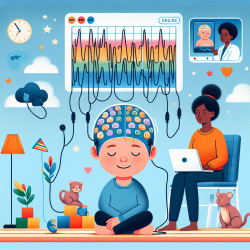Introduction
The COVID-19 pandemic has highlighted and exacerbated existing digital inequalities, presenting significant challenges for educators and practitioners. As online spaces have become essential for communication, education, and therapy, the disparities in access to technology and digital literacy have become more pronounced. This blog explores insights from the research article "COVID-19 and digital inequalities: Reciprocal impacts and mitigation strategies" and offers actionable strategies for practitioners to improve their skills and better support their students and clients.
Understanding Digital Inequalities
Digital inequalities refer to the disparities in access to technology and the skills required to use it effectively. These inequalities are deeply embedded in socioeconomic contexts, affecting individuals' ability to access information, services, and opportunities. The COVID-19 pandemic has intensified these disparities, making it crucial for practitioners to address them in their work.
Strategies for Practitioners
Practitioners can play a pivotal role in mitigating the effects of digital inequalities. Here are some strategies to consider:
- Enhance Digital Literacy: Provide training sessions and resources to help students and clients improve their digital skills. This can include tutorials on using specific software, navigating online platforms, and understanding digital safety.
- Facilitate Access to Technology: Work with schools and community organizations to ensure students and clients have access to necessary devices and reliable internet connections. Consider advocating for funding or partnerships with tech companies to provide resources to underserved communities.
- Leverage Online Platforms for Support: Utilize online platforms to create virtual support groups or forums where students and clients can share experiences and resources. This can help build a sense of community and reduce feelings of isolation.
- Promote Inclusive Practices: Ensure that online content and resources are accessible to individuals with varying levels of digital literacy and those with disabilities. This may involve using clear language, providing subtitles for videos, and ensuring compatibility with assistive technologies.
Encouraging Further Research
While these strategies provide a starting point, further research is needed to fully understand the complex interplay between digital inequalities and the impacts of COVID-19. Practitioners are encouraged to engage in research initiatives, collaborate with academic institutions, and contribute to the development of evidence-based practices that address these challenges.
Conclusion
The COVID-19 pandemic has underscored the importance of addressing digital inequalities in education and therapy. By implementing targeted strategies and engaging in ongoing research, practitioners can help bridge the digital divide and support their students and clients in navigating the digital landscape effectively.
To read the original research paper, please follow this link: COVID-19 and digital inequalities: Reciprocal impacts and mitigation strategies.










